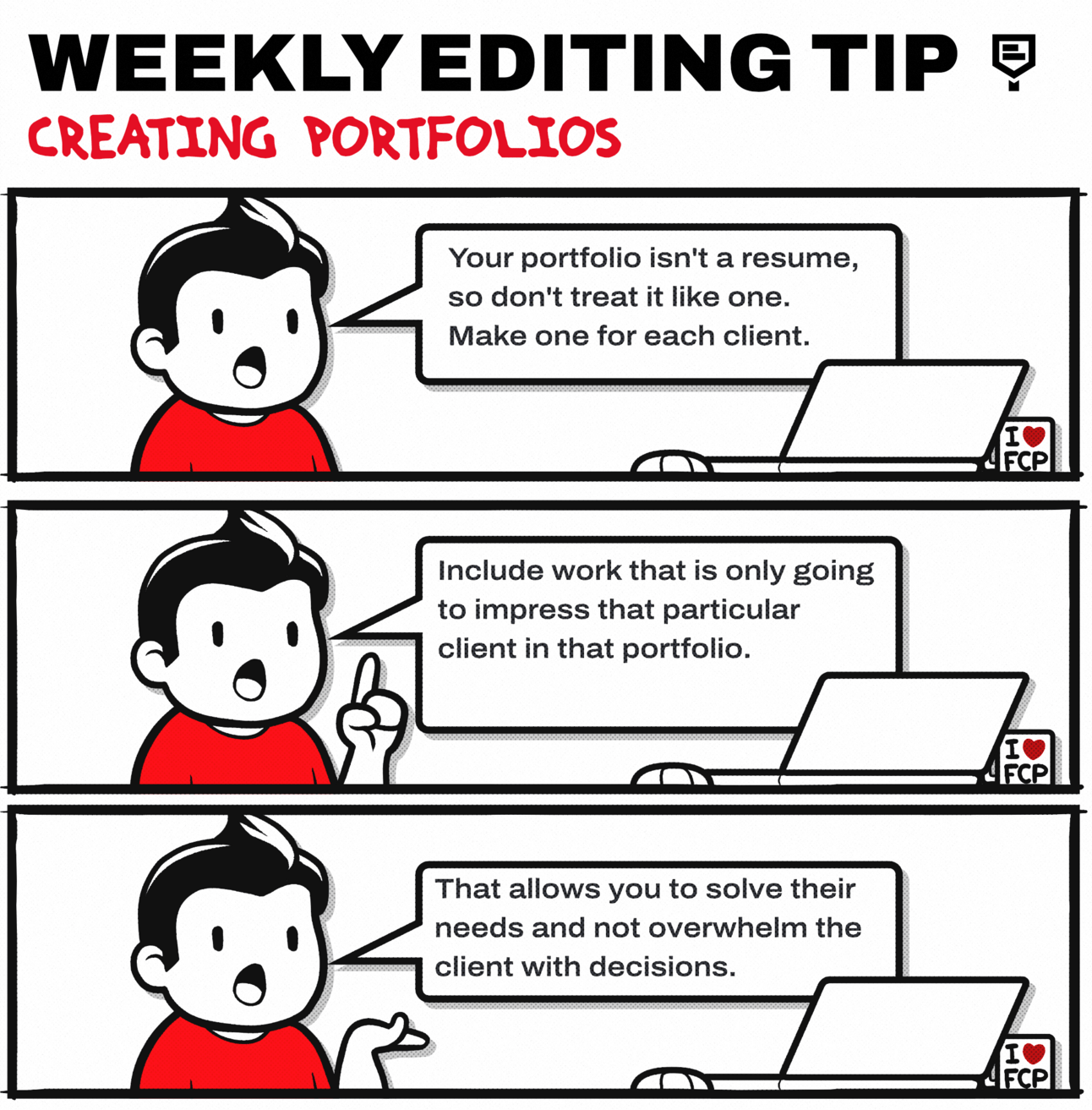- Post Box
- Posts
- This Will Get You More Editing Clients
This Will Get You More Editing Clients
In this weeks email, lets talk about the single thing that will land you more editing clients...
Reading time: 5 minutes
In today's newsletter, let's talk about a vital part of growing your video editing business: building your portfolio.
Your portfolio is like a showcase of your skills, styles, and abilities as a professional editor. It's live proof of what you can do, ready to impress potential clients.
Sadly, many editors make mistakes with their portfolios, which can stop them from getting jobs or showing off their talents effectively.
But don't worry! I'm here to help you avoid those mistakes and give you tips to make your portfolio(s) awesome.
So, let's jump into today’s email and cover:
The difference between a portfolio and a resume.
What makes a killer portfolio.
What to do if you don’t have clients to make a portfolio.
Step 1: Portfolio vs. Resume
Lots of creatives, like editors, mix up a portfolio with a resume when they're showing their services to clients.
Even though it might seem obvious, many editors treat their portfolio like their resume, stuffing it with everything they've ever done. But that's not what a portfolio is for!
It's important to know the difference because mixing them up can confuse clients who might not be familiar with the industry.
A resume is essentially a full history of your work, it’s generic in nature, and only designed to give a broad view of your experiences.
But a portfolio is different. Your portfolio should be like a tailored suit, made to fit each client perfectly.
It’s created to do a specific job of showing a potential client that you can do what they’re after, and that might only include a handful of curated pieces of work.
Step 2: Making an Awesome Portfolio
So now we know the difference, how do we create portfolios that actually land us clients?
Well, to make an amazing portfolio, you should:
Research Your Ideal Client: Understand what your clients need and like, and then make your portfolio match that. Customising your portfolios to fit each client's needs can really boost your chances of getting hired.
Don’t Stick to Just One Portfolio: Avoid the mistake of cramming all your work into one portfolio. Make a bunch of different portfolios, each focusing on a different kind of job or client. You might end up with 5 or even 10 portfolios, depending on who you want to impress.
Keep Your Portfolios Fresh: One mistake I see a lot is editors making a portfolio and then forgetting about it. Your portfolios need to be like a garden – you have to tend to them regularly. Get rid of old work that doesn't show your best skills, and only show off the stuff that makes you look awesome.
By doing these things, you can make portfolios that really stand out to potential clients.
And remember at the end of the day, a portfolio isn’t a demonstration of who you’ve worked with; it’s a showcase of your skills and abilities as an editor and creative.

Step 3: Making a Portfolio Without Clients
One big worry editors have is how to make a portfolio if they don't have any clients yet.
Surprisingly, you don't actually need clients to make a portfolio! In fact, it might even be easier to make a portfolio that attracts the clients you want if you don't have any yet.
Here are some ways to do it:
Re-Edit Your Old Work: Take some past videos your client has already done, and give them a makeover to show off your style and skills.
Create Fake Projects: Imagine you're working for your dream client, take their videos script, remake them and introduce your style. This shows off what you can do, with actual examples the client can relate to.
Make Your Own Videos: Create your own videos that show off your skills and style. Even if you don't have clients yet, you can still show what you're capable of.
By doing these things, you can make portfolios that really show off your skills.
In Conclusion
Your portfolio is different from your resume and should be customised for each client.
Research your clients well to understand what they need and like.
Make lots of different portfolios to show off your skills and appeal to different clients.
You can make a portfolio even if you don't have any clients yet by re-editing old work or making your own videos.
Hope this helps! Until next time, happy editing!
Sam 👋🏻
Reply